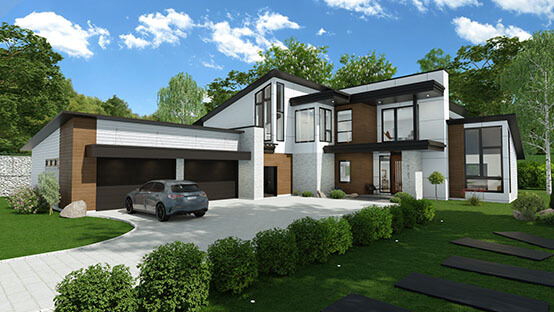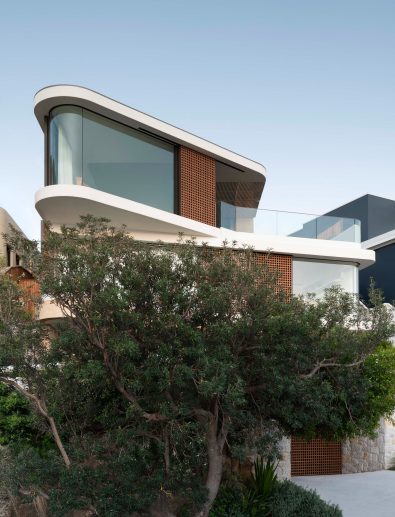Exactly How Residential Architects Create Custom-made Homes for Every Way Of Life
The process whereby property designers style tailored homes is a nuanced interplay of recognizing client requirements and equating those understandings right into useful home. Via thorough appointments and the usage of layout tools, architects catch the significance of their clients' lifestyles, guaranteeing that each home shows individual worths and goals. This joint technique extends past preliminary concepts, including sustainable practices and ingenious technologies to boost daily living. As we check out the complex actions entailed in this transformative procedure, a much deeper gratitude for the architect's duty fit special environments starts to arise.
Comprehending Client Needs

Reliable communication is vital in this process. Engineers ought to encourage clients to verbalize their lifestyles, family dynamics, and future desires, making sure that the style reflects their unique identity. By employing devices such as surveys, meetings, and aesthetic surveys, designers can collect useful understandings right into the client's vision.
Additionally, recognizing the context in which a home will certainly exist is vital. Engineers need to think about aspects such as the site qualities, neighborhood climate, and cultural influences that can affect the design. This all natural technique allows for the production of areas that are not only aesthetically pleasing yet likewise practical and sustainable.
Inevitably, a deep understanding of customer requires enables architects to develop customized homes that enhance the high quality of life for their occupants, cultivating a feeling of belonging and comfort within their living atmospheres.
Design Refine and Cooperation
The style process in household style is a vibrant interaction of imagination and cooperation, where designers, clients, and numerous stakeholders work very closely to bring a vision to life. This iterative trip generally begins with a series of meetings to develop a comprehensive understanding of the client's aspirations, preferences, and lifestyle requirements. Throughout these conversations, engineers gather necessary information, enabling them to conceptualize styles that straighten with the customer's vision.
Following the preliminary assessments, the design phase advances via illustrations, 3D models, and building renderings. This aesthetic interaction works as a tool for engineers to existing ideas, while also welcoming customer responses, ensuring that the last style reverberates with their expectations. Efficient collaboration with designers, specialists, and interior designers is important throughout this stage, as it makes certain that all practical facets of the job are effortlessly integrated.

Incorporating Lifestyle Aspects
Incorporating way of living aspects into property design is important for creating spaces that absolutely reverberate with the occupants. residential architecture homes. This procedure begins with comprehending the one-of-a-kind requirements, preferences, and daily routines of the home owners. Architects take part in comprehensive discussions to discover just how the specific or family members utilizes their area, whether for enjoyable guests, seeking pastimes, or seeking quiet retreat
Once these insights are collected, architects can tailor layout functions that boost daily experiences. Open flooring strategies might be made for households that focus on togetherness, while devoted offices can be integrated for those who function from home. look at more info Exterior areas, such as patios or gardens, can be highlighted for households that enjoy outside tasks or amusing.
In addition, adaptability is a crucial factor to consider; multi-functional spaces permit adaptability as way of lives progress with time. Custom-made storage space remedies can More hints additionally be integrated to fulfill particular organization requirements, making sure that the home continues to be clutter-free and functional. Ultimately, by thoughtfully weaving way of living components into the architectural fabric, property architects develop tailored homes that not only satisfy aesthetic desires yet also considerably enhance the quality of life for their clients.
Lasting and Smart Design
Lasting and wise design increasingly plays a critical duty in household design, as home owners look for to reduce their environmental influence while boosting their living experiences. Designers are now incorporating environment-friendly products, energy-efficient systems, and innovative technologies to develop homes that not just satisfy aesthetic needs but additionally serve the planet.
Including renewable energy resources, such as photovoltaic panels and wind turbines, permits property owners to harness natural deposits, dramatically lowering reliance on conventional power grids. Smart home technologies further improve sustainability by maximizing energy use through automated systems that control lighting, home heating, and air conditioning based upon occupancy and preferences.
Furthermore, the use of sustainable building materials-- like recovered timber, bamboo, and recycled steel-- advertises a round economic situation, reducing waste and resource intake. Architects also emphasize easy style concepts, making sure homes are oriented for maximum natural light and air flow, thus decreasing the need for fabricated cooling and heating.
Along with ecological benefits, wise and lasting style adds to the overall comfort and health and wellness of homeowners. By prioritizing interior air high quality and natural elements, designers produce spaces that foster well-being, allowing property owners to prosper in harmony with their atmosphere.
Settling and Implementing Strategies
Finalizing and executing plans is a critical stage in the domestic style procedure, where the vision of a tailored home begins to appear. hop over to here This stage entails thorough focus to information, guaranteeing that every element of the layout is precisely articulated and all set for construction. residential architecture homes. Designers collaborate carefully with customers to evaluate last plans, addressing any type of last-minute changes or worries, while making certain that all components align with the home owner's way of living demands
As soon as plans are finalized, designers prepare detailed building records, including in-depth illustrations and requirements that act as a blueprint for building contractors. These papers lay out products, finishes, and setup approaches, giving clarity for contractors and subcontractors. Additionally, securing required permits and sticking to neighborhood building codes is essential, as it makes certain compliance and smooth project execution.
Effective interaction is crucial throughout this stage. Routine updates and conversations with contractors aid to alleviate prospective problems before they arise. By promoting a collaborative environment, architects can ensure that the implementation straightens with the original vision. Eventually, this critical stage transforms concepts into fact, laying the structure for a home that reflects the distinct way of living and choices of its residents.
Final Thought
Finally, residential designers play a pivotal function in crafting customized homes that accommodate diverse lifestyles. Via thorough understanding of client demands, joint layout processes, and the combination of way of life components, designers guarantee that each home mirrors specific choices. The consolidation of sustainable techniques and wise technologies even more improves functionality and environmental responsibility. Eventually, the efforts of domestic engineers culminate in the realization of personalized space that promote comfort and well-being for their occupants.
The procedure by which residential engineers design customized homes is a nuanced interplay of comprehending client demands and converting those understandings right into useful living areas. Through comprehensive examinations and the usage of layout devices, designers record the significance of their clients' lifestyles, guaranteeing that each home mirrors individual values and goals. Architects must motivate clients to express their way of lives, family members characteristics, and future goals, making sure that the layout reflects their one-of-a-kind identity.The layout process in property architecture is a dynamic interplay of creative thinking and partnership, where engineers, customers, and various stakeholders function closely to bring a vision to life - residential architecture homes. Through meticulous understanding of customer demands, collaborative layout procedures, and the combination of way of living components, designers make certain that each home shows specific preferences